Screen Description. There’s the good kind, and the bad kind. How do you know the difference?
When you jam your script up with bad detail you kill the reader’s eye. Attention wanders. The reader avoids the description, looking at the center column for the dialogue. They start thinking about grocery lists. Not good.
They wonder why you weren’t smart enough to know that when a character walks into a Starbucks for coffee– if the scene was needed at all– why THE HELL you would tell us about the faux fireplace burning, the Monsignor who’s always there on Tuesdays, the laptop people intently staring at their machines, and the hunky barista who serves our protagonist her coffee. The reader will wonder why THE HELL you think any of this is important if it doesn’t advance story or character.
Let’s look at some examples of good and bad screen description. Part 1 will be the good stuff.
This first example from THE SAINT accomplishes plenty for just a couple lines. It is vivid without being overly descriptive. It puts us right in the moment, gives us nice perspective on the characters in the scene, and actually set the tone for the entire movie by visually showing, not telling, how the lead character got his name.
FATHER O’NEIL pulls Michael Quinn into an office down the corridor. The door has a stained-glass window.
It begins. We see it in SILHOUETTE: Father O’Neal with a CANE SWITCH in his hand, the boy beneath him. Down the switch comes. Again. And again. The boy YELPS. And again and again and again... and now he SCREAMS...
THE BOYS HUDDLED IN THE DOORWAY begin to wince. With every repeated, merciless descent of the switch...
Here’s one from the “Terrible T’s”, Terry Rossio and Ted Elliot, creators of the great website wordplayer.com and writers of a little movie franchise you may have heard of, PIRATES OF THE CARIBBEAN. This, from their script of SANDMAN.
INT. MINISTRY- DAY
Burgess lets Elspeth fall to the ground. He holds his hands up like a surgeon. They are stained with Elspeth’s blood. Careful not to break the circle, Burgess steps close to the captured FIGURE. With bloody hands he strips off the cloak.
He takes the ruby.
He takes the pouch.
And then he removes the helm -- The face revealed is bone white, framed by jet black hair.
An aquiline nose and high cheekbones, a face carved from finest marble -- save the eyes.
These are obsidian, deep as the universe -- and staring directly at Burgess.
He is the personification of dream.
He is SANDMAN.
When you’re describing your lead character, hell yeah you can get poetic. Professional screenwriters always deepen character development through character description. They cheat it by ignoring the stiff unfilmable/camera gotta see it rule and lay down sweet description that will stick with a reader and make their script stand out. It’s what makes them pros, knowing when to show off and when to not.
Here’s another, from SAVING PRIVATE RYAN:
EXT. OMAHA BEACH- NORMANDY- DAY
THE CAMERA MOVES PAST THE FACES OF THE MEN
Boys. Most are eighteen or nineteen years old. Tough. Well-trained. Trying to block out the fury around them.
A DIRECT HIT ON A NEARBY LANDING CRAFT
A huge EXPLOSION of fuel, fire, metal and flesh. THE LEAD LANDING CRAFT The Motorman holds his course.
Shells EXPLODE around them. FLAMING OIL BURNS on the water. CANNON FIRE SMASHES into the bow.
THE MOTORMAN IS RIPPED TO BITS
BLOOD AND FLESH shower the men behind him. The mate takes the controls.
Fantastic stuff. You feel like you’re right in there with them. Why? This isn’t magic, it’s craft. Look at his choice of verbs. The motorman is ripped to bits. Blood and flesh shower the men…This is page 1, prime real estate. Pull out all the stops on page 1. Blow the reader away right now, not later. If you want to make your living at this and can’t describe Omaha Beach on D-Day, yeah, it might be time to consider that second career as a pharmacist.
Here’s one from another Spielberg movie, SCHINDLER’S LIST
INT. HOTEL ROOM – CRACOW, POLAND – NIGHT
The song plays from a radio on a rust-stained sink. The light in the room is dismal, the furniture cheap. The curtains are faded, the wallpaper peeling... but the clothes laid out across the single bed are beautiful.
The hands of a man button the shirt, belt the slacks. He slips into the double-breasted jacket, knots the silk tie, folds a handkerchief and tucks it into the jacket pocket, all with great deliberation.
A bureau. Some currency, cigarettes, liquor, passport. And an elaborate gold-on-black enamel Hakenkreuz (or swastika) which the gentleman pins to the lapel of his elegant dinner jacket.
He steps back to consider his reflection in the mirror. He likes what he sees: Oskar Schindler -- salesman from Zwittau -- looking almost reputable in his one nice suit.
Even in this awful room.
INT. NIGHTCLUB – CRACOW, POLAND – NIGHT
A spotlight slicing across a crowded smoke-choked club to a small stage where a cabaret performer sings.
It’s September, 1939. General Sigmund List’s armored divisions, driving north from the Sudetenland, have taken Cracow, and now, in this club, drinking, socializing, conducting business, is a strange clientele: SS officers and Polish cops, gangsters and girls and entrepreneurs, thrown together by the circumstance of war.
Oskar Schindler, drinking alone, slowly scans the room, the faces, stripping away all that’s unimportant to him, settling only on details that are: the rank of this man, the higher rank of that one, money being slipped into a hand.
Couple things I notice here. Look at the detail in that first scene. You basically learn about who this man is just by the contents of his pockets, by how he dresses. Look at the spacing in the paragraphs. Even if you hit us with 16 lines of screen direction, if you do it 4-4-4-4 we won’t notice and actually admire the density of description. Absolutely every detail is needed in the introducing of Oscar Schindler.
Look at the second scene description. We go into Schindler’s mind: “stripping away all that’s unimportant to him, settling only on details that are: the rank of this man, the higher rank of that one, money being slipped into a hand” Purists will say unfilmable, you can’t SEE into someone’s mind to know what’s important to them. Let me tell you, what the purists also will never know is how to sell their own scripts. This is exactly the sort of detail that gets a script sold. And if you have to cheat an unfilmable or two, so what?! It defines the character quickly, economically. Write like this, you’ll be on your way.
One more from the unfilmable file that is entertaining and, I think, cheats well. From SCREAM 3 (of all places!):
EXT. HOLLYWOOD SIGN – NIGHT
The SUV comes to a screeching halt alongside the hilly, narrow road. Ben jumps out of his car, cell phone in hand. He looks up at the towering sign standing ahead of him, contemplates. Does he really wanna go up there? He looks into his SUV, gets an idea.
THE BACK --
--is opened. Ben reaches in looking for a weapon. AN OLD BEACH CHAIR. Not gonna do the trick. A pair of old shoes. Nope. Then he finds it, a LOUISVILLE SLUGGER with “ACTORS AT BAT FOR BRAIN CANCER” written across it.
The screen direction puts you right into the mind of the character. Done at key moments, I’ve got no problem with it. The best romantic comedy I ever read, MY BEST FRIEND’S WEDDING, was filled with internal narration/screen description that goes right into Julia Robert’s character’s mind. I approve!
One last example, from SEVEN. The best writers make the audience feel the character’s tension by infusing the moment with suspense. How do they do that? Again, it’s craft, not magic. Look at the use of the three dot … technique here. This is nothing new, breaking up action using inner paragraph dots, or a two dash — technique. Learn your craft, you’ll be a better writer for it.
INT. SOMERSET’S APARTMENT -- NIGHT
The curtains are closed. The SOUNDS of the CITY are here as they
will be everywhere in this story. A CAR ALARM is SOUNDING,
shrill and clear. Somerset’s life is packed into moving boxes,
except for some clothing in a closet and hundreds and hundreds of
books on the shelves of one wall. Somerset is lying on the bed,
dressed only in his underwear.
He reaches to the nightstand, to a wooden, pyramidical metronome.
He frees the metronome’s weighted swingarm so it moves back and
forth. Swings to the left -- TICK, swings to the right -- TICK.
Tick... tick... tick... measured and steady.
Somerset situates on the bed, closes his eyes. Tick... tick...
tick. The metronome’s sound competes with the sound of the car
alarm. Somerset’s face tightens as he concentrates on the
metronome. His eyes close tighter. Tick... tick... tick. The
swingarm moves evenly. Somerset’s breathing deepens.
Tick... tick... tick. The car alarm seems quieter.
Tick... tick... tick. Somerset continues his concentration. The
metronome’s sound seems louder.
Tick... tick... tick. The sound of the car alarm fades, and is
GONE. The metronome is the only sound.
Somerset’s face relaxes as he begins to fall asleep. Tick...
tick... tick...
INSERT -- TITLE CARD
SUNDAY

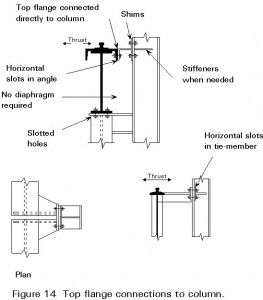
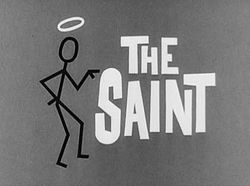
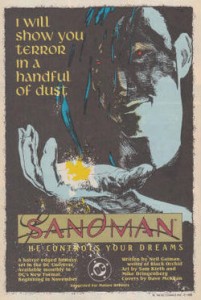
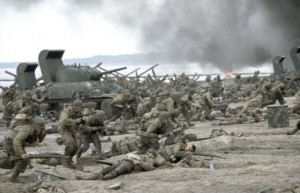
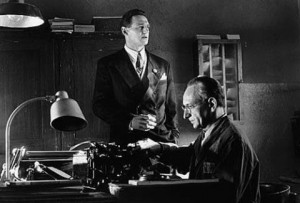
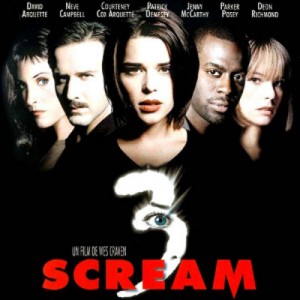

Yep -it’s all about story. Read the scripts for FULL METAL JACKET and MEET JOE BLACK …. more like novels than SPEC scripts.